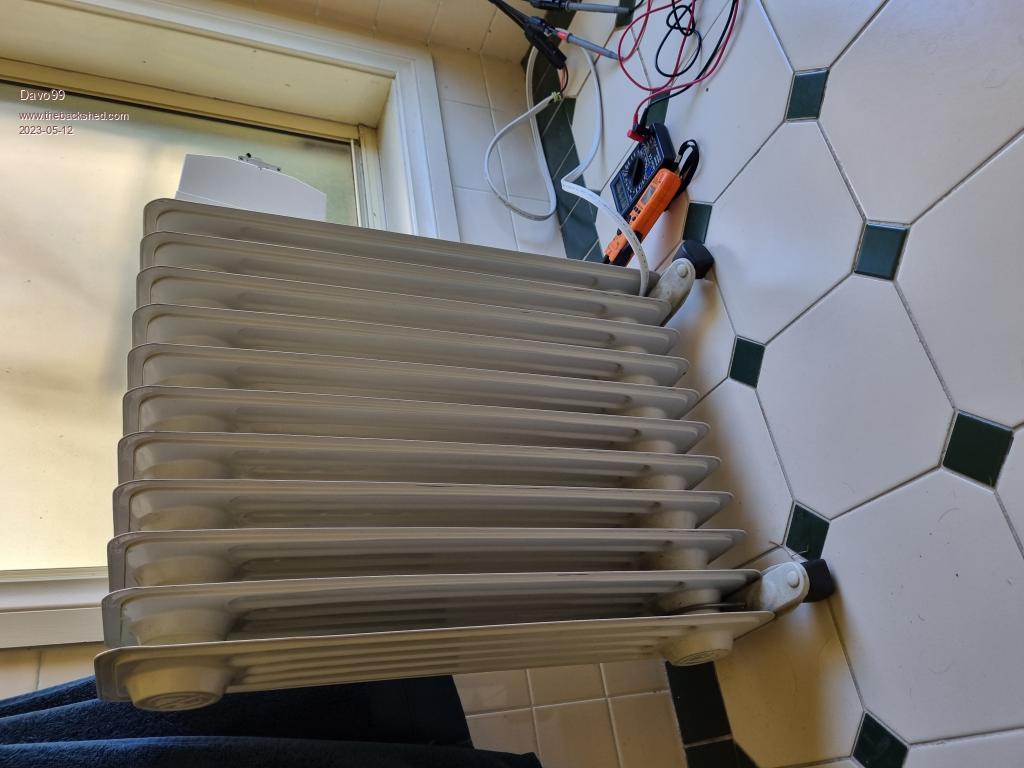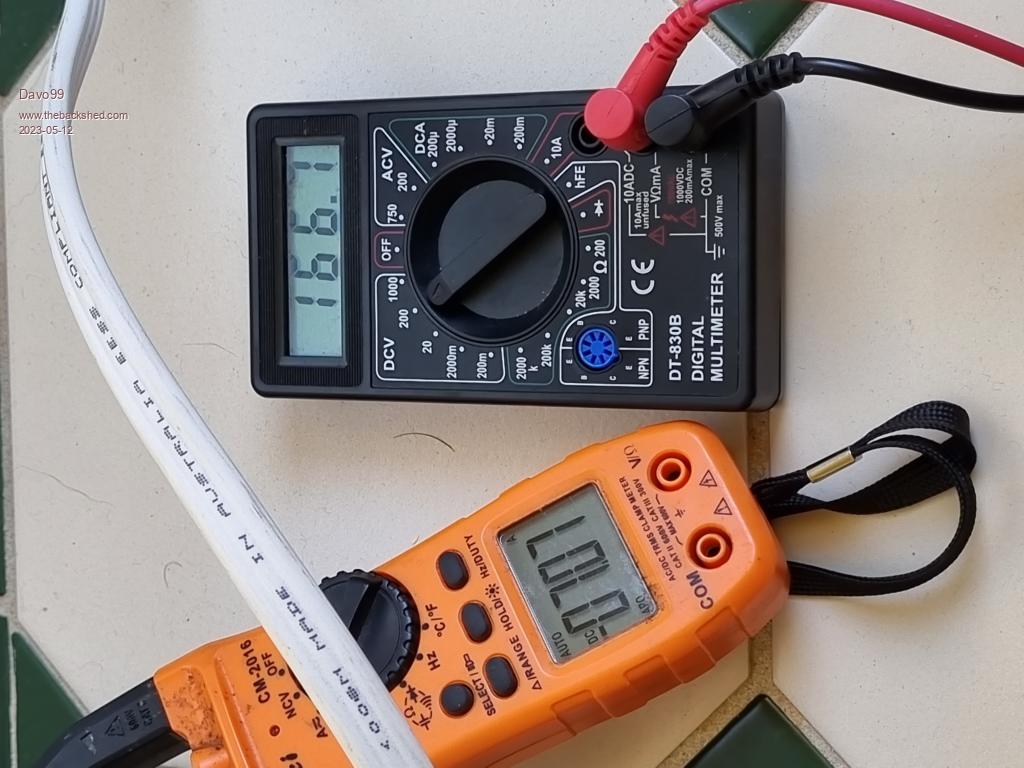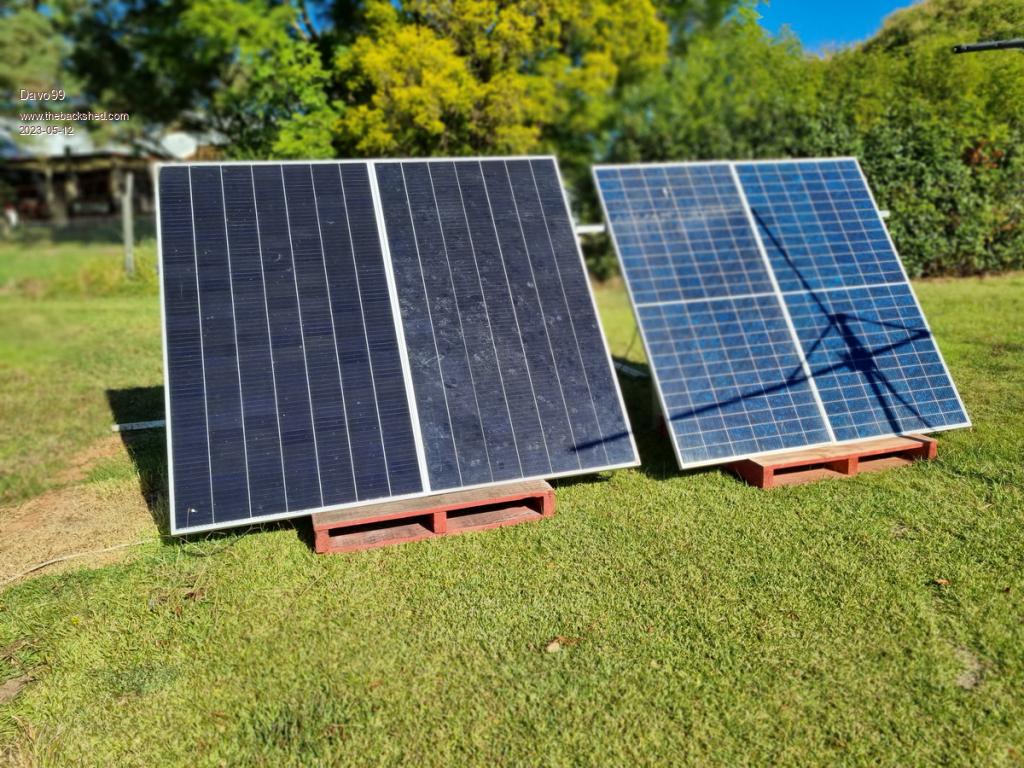
|

|
Forum Index : Solar : Solar Off Grid. PV Solar Matched to Heating Element .
| Page 1 of 2 |
|||||
| Author | Message | ||||
| Confused Newbie Joined: 02/05/2023 Location: IrelandPosts: 17 |
Any Information on success or failures on the above. Just wondering how It worked out overtime. Check out my previous post on what I'm TRYING to achieve. Thanks J.S. |
||||
| Confused Newbie Joined: 02/05/2023 Location: IrelandPosts: 17 |
Sorry, I meant to add to the above post. I have NO Batteries, Inverters, Controls. Just Bifacial PV Solar Panels connected to Water heating Element to heat domestic water. IF, IF It can be done successfully I Intend to add more panels and pre heat my Central Heating. Thanks J.S. |
||||
| Confused Newbie Joined: 02/05/2023 Location: IrelandPosts: 17 |
Please, Does Anybody know If this Is achievable. There is a man on another board says he has has done It. Under the heading " Matching heating elements to PV Solar Panels". I'd rather spend my time trying other systems. Has anybody has tried and failed with the former?. I have tried to contact him without success. Not a great omen I accept. J.S. Thanks |
||||
| rogerdw Guru Joined: 22/10/2019 Location: AustraliaPosts: 852 |
I'm not sure if you read Murphy's friend's update in his thread ... but it seems he has made it work. Have a good read of how he did it and then ask specific questions and I'm sure you'll get your answers. Cheers, Roger |
||||
| Confused Newbie Joined: 02/05/2023 Location: IrelandPosts: 17 |
Thanks again Roger for taking the time to help. Yes, I've seen that one which seems to be the best one. I am trying to avoid all the hardware. The one i mentioned seems to be working for him. He seemingly has connected the output from the Solar Panels directly to the element in the Water Heater. He shows a chart he's worked out on how to select the Heater Element with the correct ohms to suit. Like i said I've emailed him to ask If Its still working without problems. But received no reply. As I've explained and you probably know It's the arcing Is the problem. That's why you need a unit like you've shown. Beginning to look like I'll have to use the control unit you've shown. J.S. |
||||
| rogerdw Guru Joined: 22/10/2019 Location: AustraliaPosts: 852 |
Ahh okay. I didn't realise you were trying to avoid ALL hardware ... I thought you were looking for the simplest, workable setup that also avoids burning out thermostats. I assume you were referring to David Poz's video, but after watching that, he still didn't address the issue of how to deal with maintaining the temperature when or if it actually got to temperature. At some point (you would hope) your water would get to the required temperature ... and how do you deal with that? Cheers, Roger |
||||
| Confused Newbie Joined: 02/05/2023 Location: IrelandPosts: 17 |
Yes correct Roger. Seems I'm looking for the Impossible. I emailed him about his idea but he didn't answer so maybe he had that problem after. Have you a system using the controller shown on here. My son works on computers, do you know If there is enough Information In the photos for him to make one or are they for Sale only. Sorry if I'm annoying you with all the questions. I'f so I'll ask further up the line. Thanks again. J.S. |
||||
| Murphy's friend Guru Joined: 04/10/2019 Location: AustraliaPosts: 648 |
You may be *very* disappointed if you try to power a heating element directly from solar panels. You see, the sunshine is not always constant, nor is the alignment of your panels unless you use an expensive tracker. Solar panels have a maximum power point that constantly changes with changing solar input. There is *no* way I know that a fixed wattage heating element can be matched to solar panels when their output is always changing. So, some electronic trickery is required to get the best power to a given element in any solar condition. My system even works in overcast conditions where a directly connected element would give you no heat to speak of. I have a suspicion that your video man realised at last that the sun's output *does* change and he cannot change the heating element resistance to suit. |
||||
| Confused Newbie Joined: 02/05/2023 Location: IrelandPosts: 17 |
Thanks Murphs F, That puts that to bed. Explained nicely, the element resistance is too much of a moving target. |
||||
| phil99 Guru Joined: 11/02/2018 Location: AustraliaPosts: 2135 |
There is a medium complexity method that gives a rough approximation of peak power tracking. As the amount of sunlight varies the optimum output voltage and current of the panels remain in roughly the same ratio as they are in full sun. Eg. if the peak power in full sun is 1000W @ 100v and 10A then if the light intensity drops to 1/4 of the peak the power will be 250W at roughly 50V and 5A. A 10:1 ratio in both cases. An op-amp can compare V and I with its output controlling a PWM signal to a MOSFET in series with the heater, to maintain that ratio. The tank thermostat would switch the PWM off when up to temp. Not as good as proper tracking but a lot better than none. |
||||
| KeepIS Guru Joined: 13/10/2014 Location: AustraliaPosts: 1679 |
The simple Solar hot water system controller I made at the beginning of the year, powered with only 6 old solar panels, is still heating our HWS to full temperature daily, we have not turned on the Mains powered HWS since the first day I switched the smaller solar powered unit on, it has been faultless. The element voltage is a non event, PWM control it to less then, or up to, the max rated AC voltage it was designed for and it runs perfectly. . It's all too hard. Mike. |
||||
| Confused Newbie Joined: 02/05/2023 Location: IrelandPosts: 17 |
Thanks Phil99, Very well explained. You'll see on my 6.18 pm post above what I'm trying to achieve. Looking like I'll have to gear up. J.S. |
||||
| Confused Newbie Joined: 02/05/2023 Location: IrelandPosts: 17 |
Hello Keep It, Is It the controller with the 16 Caps, mentioned on the other thread.If not Any chance of a simple diagram of it and your set up. Thank you J.S. |
||||
| Davo99 Guru Joined: 03/06/2019 Location: AustraliaPosts: 1578 |
I have been matching panels to a water heater and boiling it. Modified a cheap kettle to run on DC and I have this last week been doing the same thing with an oil filled space heater. They are all just resistors, makes no difference. No, the output without any control electronics is not optimal, as efficient as it can be or anything else. It DOES work however and can work really well. I looked at the David POZ calculator and have worked off that and now written a lot of my notes and references into it. The one thing I found is he quotes having LESS resistance in the panels than the load. I found the opposite to be more effective. You want to be in the ball park but as the sun is never going to be at the panels rating and the panels therefore are not going to give full power, I believe this is why adding an extra panels gives good results. The bottom line is one does not have to get pedantic about this. I have been doing a write up elsewhere On my setup and running 4 mismatched panels with mismatched resistance has been giving me good heat output. Not efficient but frankly, I don't give a rats. I have more panels than I know what to do with on the roof and spare and I'm at the limit of what I can feed back. Doing a stand alone system is fine regardless of it' it' 90 or 50% efficient. I tend to just run things flat out. If it's say a 2000W element, then I put enough panels together to deliver that regardless of what the voltage adds up to. It can be more with seriesed panels but who cares? The panel voltage will pull down when the load is applied and as long as the voltage does not go too high, works just fine. I can easy get 1500W out of 2KW of panels and I'm not sure I'd be getting much more than that if I was running the panels MPPT. I have also just worked on the direct ohm match and that delivers good power even if half the power of the loads rating. People IMHO get FAR too pedantic with solar always taking the moral/ technical high ground. You can get away with a LOT with solar because it's completely imperfect from the very start so never going to be spot on. If you are chasing the highest efficiency, then you need some sort of electronics. I looked at some layouts here and being an electronic Dilettante, came up with my own simplification that uses 2 pre built boards. The first was an ardino "Blink" circuit. The one that turns an LED on for a set time than off. Simplest thing the board can do. I concluded that Caps have very low resistance to panels so they won't pull them off their curve. I therefore used a cap bank and determined as long as the caps are not charged to capacity, no power of any merit is lost. I simply hooked the panels to the caps and used the arduino to cycle a Mosfet to connect the caps to the load. I came up with 50ms off ( charging) 10 switched. I forget the size of the cap bank I have but again, as long as it is not over filled, it does not matter on the cycle rate. It will store all the power the panels produce and if that's not much at the time, caps store it till the are switched to the load and all the power is sent to where it is wanted. My simple test for this was simply to connect a 500W Light to the array direct and with the pulse circuit late in the afternoon. Direct the lamp glow was just perceivable. With the bang bang circuit, it was noticeably brighter showing the panels were being kept in a far happier place. I refined/ Cheapened this setup with a cycle timer board that does MS and just had it drive the mosfet. The rest is the same. It's pretty hard to go wrong with this as far as the timing, just give the caps enough time to discharge which seems to be very fast and keep the charge time short enough so whatever caps you are running never get full and that's it. Having even this simple control does work better but connecting panels direct works fine too. I have boiled water heaters, a kettle and now the space heater and they all work great.     |
||||
| Confused Newbie Joined: 02/05/2023 Location: IrelandPosts: 17 |
AH Davo99, thanks very much. Any chance of a close up photo of the units in your system. My son has experience in TVs and Computers and will understand the makeup of your system far better than i do. Do you foresee any problems or the need to test for a bit longer. Again thanks very much to you, KeepIS, Phil, Roger and Murph. for the detailed replies. |
||||
| KeepIS Guru Joined: 13/10/2014 Location: AustraliaPosts: 1679 |
Yes page two, linked below, has the revised circuit. Link to Controller . It's all too hard. Mike. |
||||
| Murphy's friend Guru Joined: 04/10/2019 Location: AustraliaPosts: 648 |
Just be very very careful messing about with high voltage DC, it can easily kill you. If you have lots of panels then Davo's no electronic approach would be the easiest. In my case with just 12 x 190W panels (2 x 6 panel strings) some electronics help a lot to get 160 liter water hot enough for the thermostat, set at 70 degrees, to turn off. This time of the year it takes 1/2 day if sunny, most of the day if overcast. Do NOT use the inbuilt thermostat to switch direct DC, it will destroy itself quickly. That thermostat only switches 12V with KeepIS and my electronic controller and will last longer than the heater used that way. |
||||
| Davo99 Guru Joined: 03/06/2019 Location: AustraliaPosts: 1578 |
What units are your referring to specifically? The control board or?? The panels are connected direct to the caps and they are in circuit all the time. There is a mosfet ( or 2) connected between the cap bank and the load. The timer board or Arduino merely switches/ pulses the mosfet to connect the cap and the load. I forgot to mention the Thermo side as Murph mentions. That has a 2A plug pack connected to the solar which drives a 500A, 500V DC relay. The water heater thermo controls the relay so it is only switching the 15V side not the solar input itself. Be better to use mosfets for that but I bought the relays so I put them to use. I have been meaning to test the pulse side for a while because due to the cycling of the power from the caps to the element, I don't see why the thermostat can't run the load as normal? The frequency should I believe make the DC act like AC and extinguish the arcing. I am running the DC at the same frequency mainly as the mains so at worst, I am thinking I may only have to bump up the discharge side which shouldn't be a problem although may need more caps depending on the amount of panels I am taking power from. To straight drive a load off panels, wouldn't have to worry about the caps of course. I have been meaning to set up a driver unit like this to test because if it works as I think it will, then I can simply plug in my kettle or space heater and run them unmodified and use the inbuilt thermostats on them or anything else which will be very handy. |
||||
| phil99 Guru Joined: 11/02/2018 Location: AustraliaPosts: 2135 |
Yes, as long as the switching 'on' time is short enough to prevent excessive burning and the 'off' time long enough to extinguish the arc. Or the thermostat could switch the MOSFET gate, with a resistor to source to ensure it switches off. |
||||
| Confused Newbie Joined: 02/05/2023 Location: IrelandPosts: 17 |
Davo99 It's ok my son understands about the boards. Phil99 I'll that to my son. Thanks both of you. J.S |
||||
| Page 1 of 2 |
|||||